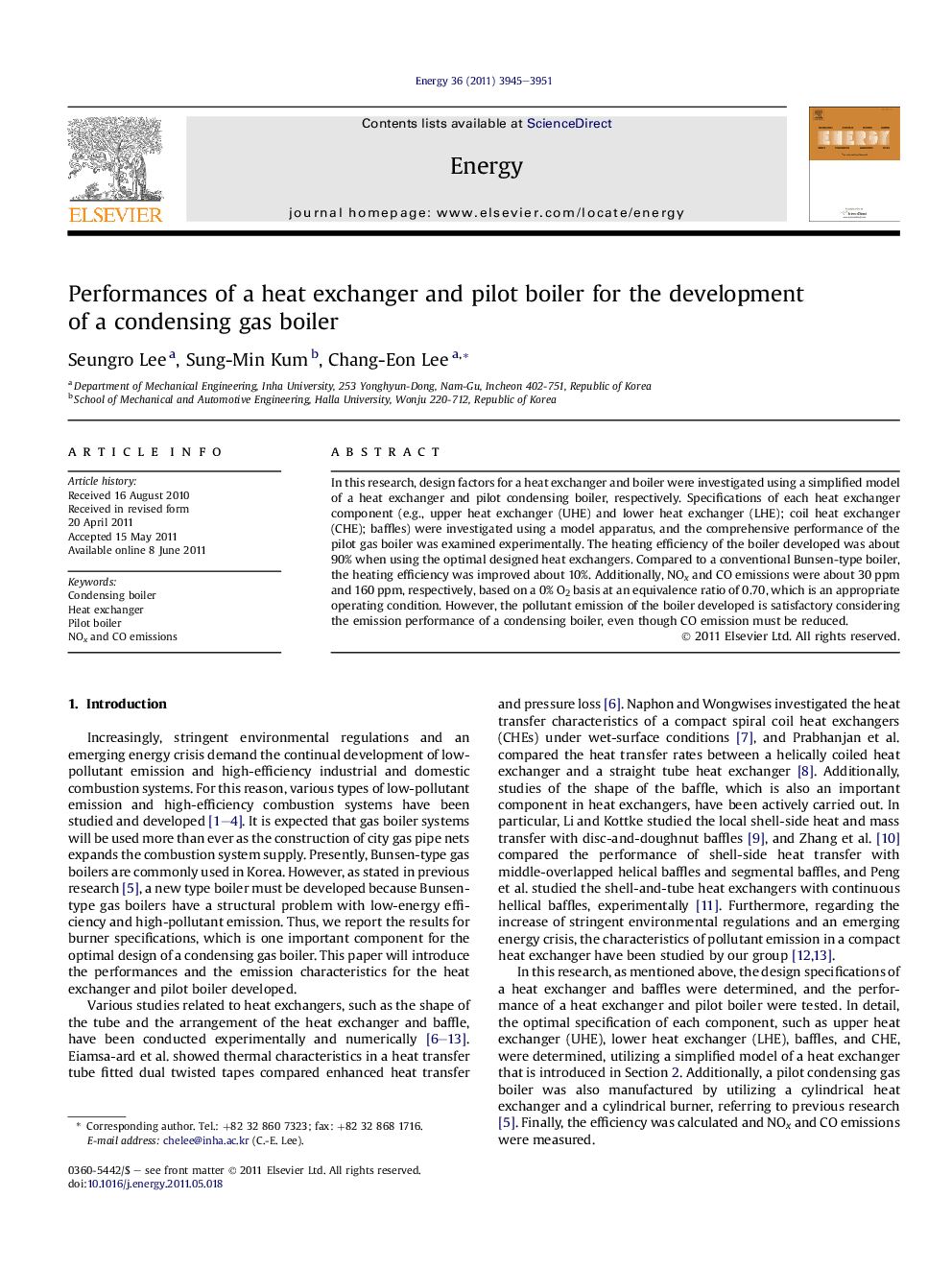| Article ID | Journal | Published Year | Pages | File Type |
|---|---|---|---|---|
| 1734151 | Energy | 2011 | 7 Pages |
In this research, design factors for a heat exchanger and boiler were investigated using a simplified model of a heat exchanger and pilot condensing boiler, respectively. Specifications of each heat exchanger component (e.g., upper heat exchanger (UHE) and lower heat exchanger (LHE); coil heat exchanger (CHE); baffles) were investigated using a model apparatus, and the comprehensive performance of the pilot gas boiler was examined experimentally. The heating efficiency of the boiler developed was about 90% when using the optimal designed heat exchangers. Compared to a conventional Bunsen-type boiler, the heating efficiency was improved about 10%. Additionally, NOx and CO emissions were about 30 ppm and 160 ppm, respectively, based on a 0% O2 basis at an equivalence ratio of 0.70, which is an appropriate operating condition. However, the pollutant emission of the boiler developed is satisfactory considering the emission performance of a condensing boiler, even though CO emission must be reduced.
► Design factors for a heat exchanger and a boiler were investigated using a simplified model and pilot boiler. ► The heating efficiency of the boiler developed was about 90% at the optimal designed heat exchangers. ► NOx and CO emissions were about 30 ppm and 160 ppm, based on a 0% O2 basis and at an equivalence ratio of 0.70.
